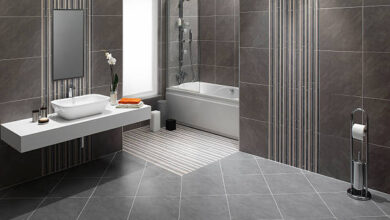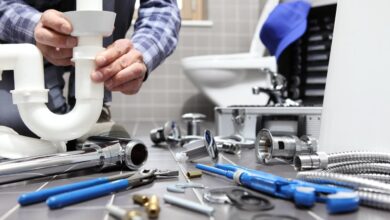How to Ensure Proper Roof Drainage Systems

Proper roof drainage systems from a reliable roofing contractor are crucial for maintaining your home’s integrity and longevity. Water can accumulate on the roof without efficient drainage, leading to leaks, structural damage, and other costly problems. Ensuring that your roof drainage system is correctly designed, installed, and maintained is essential for protecting your home from water damage. We will explore key strategies and considerations for ensuring proper roof drainage systems, helping you to safeguard your home against the harmful effects of water accumulation.
Design Considerations for Roof Drainage
Slope and Pitch
The slope and pitch of your roof significantly affect how effectively water is directed away from the surface. A roof with a steep pitch will naturally allow water to flow off more quickly than a flat or low-pitched roof. When designing your roof, ensure an adequate slope to facilitate water runoff. The specific pitch required can vary depending on the type of roofing material used and the local climate conditions. Consulting with a professional during the design phase can help determine the appropriate slope for your roof.
Gutters and Downspouts
Gutters and downspouts are essential components of a roof drainage system. They collect and channel water away from the roof and your home’s foundation. When selecting gutters and downspouts, consider the size and capacity needed to handle the volume of water typically experienced in your area. Ensure that gutters are installed with the correct slope to allow water to flow toward the downspouts. Additionally, positioning downspouts at strategic locations around the house helps distribute water runoff more evenly and reduces the risk of soil erosion around the foundation.
Proper Installation Techniques
Secure Attachment
Proper installation of gutters and downspouts is crucial for effective drainage. Gutters should be securely attached to the roof with appropriate brackets and fasteners to prevent them from sagging or detaching under the weight of water and debris. Downspouts should be firmly connected to the gutters and anchored to the house’s exterior walls. Ensuring that all components are securely attached helps maintain the efficiency of the drainage system and prevents potential damage during heavy rainfall or storms.
Seamless Gutters
Consider using seamless gutters for your roof drainage system. Unlike traditional sectional gutters, seamless gutters are custom-made to fit the exact dimensions of your roof. This design minimizes the number of joints and seams where leaks can occur. Seamless gutters provide a more efficient and durable drainage solution, reducing the likelihood of water damage caused by leaks or clogs. Although seamless gutters may have a higher initial cost, their long-term benefits make them a worthwhile investment.
Regular Maintenance Practices
Cleaning Gutters and Downspouts
Regular maintenance is essential for ensuring that your roof drainage system functions properly. One of the most critical maintenance tasks is cleaning gutters and downspouts to remove debris such as leaves, twigs, and dirt. Clogged gutters can prevent water from flowing freely, leading to overflow and potential damage to the roof and foundation. Schedule regular gutter cleanings, especially during the fall when leaves are more likely to accumulate. Using gutter guards can also help reduce the frequency of cleanings by preventing debris from entering the gutters.
Inspecting for Damage
Periodically inspect your roof drainage system for signs of damage or wear. Look for cracks, holes, or rust in the gutters and downspouts, and check for loose or missing fasteners. Addressing these issues promptly can prevent more significant problems from developing. Additionally, inspect the roof surface for signs of water pooling or damage that may indicate an issue with the drainage system. Regular inspections and timely repairs are key to maintaining an efficient and effective roof drainage system.
Advanced Drainage Solutions
Roof Drains and Scuppers
Traditional gutters and downspouts may not be sufficient for flat or low-pitched roofs to handle water runoff. In such cases, installing roof drains or scuppers can provide an effective drainage solution. Roof drains are installed at low points on the roof and connected to a drainage system that directs water away from the building. Scuppers are openings in the parapet walls that allow water to drain off the roof and into a gutter or downspout. These advanced drainage solutions can help prevent water accumulation on flat roofs and reduce the risk of leaks and structural damage.
Siphonic Roof Drainage Systems
Siphonic roof drainage systems are innovative solutions designed to handle large volumes of water quickly and efficiently. Unlike traditional gravity-based systems, siphonic drainage uses the principles of negative pressure to create a siphon effect that rapidly draws water off the roof. This system requires fewer downspouts and smaller pipe diameters, making it ideal for large commercial buildings or areas with heavy rainfall. While siphonic systems may require professional design and installation, their efficiency and effectiveness make them valuable for enhancing roof drainage.
Read also: Roofing Maintenance Tips for McKinney, TX Homeowners
Landscaping and Grading Considerations
Proper Grading
The landscaping and grading around your home can significantly impact the effectiveness of your roof drainage system. Ensure that the ground slopes away from the foundation to prevent water from pooling around the base of your home. Proper grading helps direct water away from the foundation and reduces the risk of basement flooding or soil erosion. If necessary, consider regrading the landscape or installing a French drain to improve water drainage around your property.
Rain Gardens and Swales
Incorporating rain gardens or swales into your landscaping can provide additional protection for your roof drainage system. Rain gardens are shallow, planted depressions that capture and absorb rainwater, reducing runoff and promoting groundwater recharge. Swales are shallow ditches that direct water away from the home and towards designated drainage areas. Both solutions can help manage water runoff effectively and enhance the overall drainage system.
Conclusion
Proper roof drainage systems are essential for protecting your home from water damage and maintaining its structural integrity. By focusing on key design considerations, implementing proper installation techniques, and practicing regular maintenance, homeowners can enhance the efficiency and effectiveness of their roof drainage systems. Advanced drainage solutions and thoughtful landscaping can improve water management, safeguarding your home against potential damage. Regular attention to your roof drainage system ensures a well-protected home and long-lasting peace of mind.




